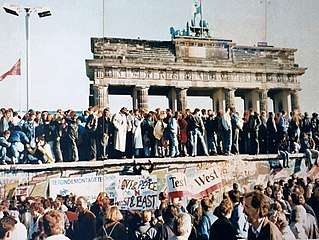Nuclear depth bomb
A nuclear depth bomb is the nuclear equivalent of the conventional depth charge, and can be used in anti-submarine warfare for attacking submerged submarines. The Royal Navy, Soviet Navy, and United States Navy had nuclear depth bombs in their arsenals at one point.
%2C_11_May_1962.jpg)
Due to the use of a nuclear warhead of much greater explosive power than that of the conventional depth charge, the nuclear depth bomb considerably increases the likelihood (to the point of near certainty) of the destruction of the attacked submarine.
Some aircraft were cleared for using these, such as the P2V Neptune, but none were used against any submarines.
Because of this much greater power some nuclear depth bombs feature a variable yield, whereby the explosive energy of the device may be varied between a low setting for use in shallow or coastal waters, and a high yield for deep water open-sea use. This is intended to minimise damage to peripheral areas and merchant shipping.
All nuclear anti-submarine weapons were withdrawn from service by the United States, the United Kingdom, France, Russia, and China in or around 1990. They were replaced by conventional weapons such as the Mk 54 Torpedo that provided ever-increasing accuracy and range as anti-submarine warfare technology improved.
See also
- Shock factor
- RPK-6 Vodopad/RPK-7 Veter (1981-present?)
- WE.177 (1966-1998)
- Mark 90 nuclear bomb (1952-1960)
- W34 for Mk 101 Lulu (1958-1971)
- W34 for Mk 105 Hotpoint (1958-1965)
- B57 nuclear bomb (1963-1993)
- B90 nuclear bomb (cancelled)
- W44 for RUR-5 ASROC (1961-1989)
- W55 for UUM-44 SUBROC (1964-1989)
- W89 for UUM-125 Sea Lance (cancelled)
